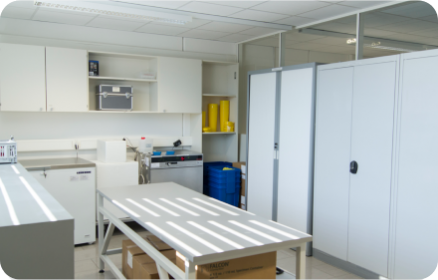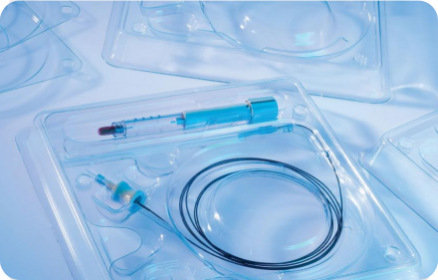Modern & intelligently designed
Since the foundation of Medistri in 2006, we have been highly focused on offering the solutions that will benefit our customers, our community and the future of our planet. We believe that the downside of Ethylene Oxide can be eliminated when working with modern and intelligently designed operations.
That is why, we have invested our resources in finding smarter systems, protocols & validation methods to reduce, optimise and eliminate ethylene oxide emissions. Although there are local and federal regulations that have been put in place for such purposes, we believe in setting up even higher internal standards to ensure the health and safety of our communities and of future generations.
Gas treatment technology
That is why since our foundation, we’ve installed complex, leading- edge, high performance gas treatment technology systems.

Fundamentally, our two-step technology forces the gas to pass trough our Peak Shaver followed by an injection of the gas residuals through our Catalytic Burner. Our Peak Shaver reduces gas concentration and our Catalytic Burner eliminates the gas.
Our systems are tremendously in full compliance with local and federal legislations because they allow for an almost 100% complete reduction of EO emission.

We’ve accomplished 3 large investments to improve our processes and allow ourselves to operate our facilities 24/7 and improve upon the already-fully respected environmental rules as well as at the complete safety of our employees.
That is why since our foundation, we’ve installed complex, leading- edge, high performance gas treatment technology systems.
Our systems are tremendously in full compliance with local and federal legislations because they allow for an almost 100% complete reduction of EO emission.


The smart & improved Biological Indicator/ Bioburden Approach
At Medistri, we’ve also invested our ressources in order to offer a better alternative to the traditional sterilization method.
We’ve popularised & offered a smarter alternative to the market called the “ Biological Indicator/ Bioburden Approach”. Let’s compare it to the traditional “Overkill Approach B”.
Overkill Approach B
The traditional Method Overkill Approach B is based on performance of 3 half cycles with total kill of Biological indicators and 1 short cycle with some growths.

- Conservative Method
- Already known in the market, easy to defend and explain to customers and auditors.
- Cost of validation is known
- Quantity of EO gas used is too high as base on Biological indicators 10^(-6) with high contamination.
- Cycle length too long: It can reach up to 20 hours for certain products with additional degassing time.
- Not environmentally friendly, Not a sustainable process.
Biological Indicator/ Bioburden Approach A
The traditional Method Overkill Approach B is based on performance of 3 half cycles with total kill of Biological indicators and 1 short cycle with some growths.

- Conservative Method
- Already known in the market, easy to defend and explain to customers and auditors.
- Cost of validation is known
- Quantity of EO gas used is too high as base on Biological indicators 10^(-6) with high contamination.
- Cycle length too long: It can reach up to 20 hours for certain products with additional degassing time.
- Not environmentally friendly, Not a sustainable process.
Let us help you
Wether you work in the medical device industry, the aero-spacial industry, or any other industry were EO sterilization is required, we advice you to consider reducing the usage of gas in your sterilization process. The usage of Ethylene Oxide can not be 100% eliminated but can be greatly reduced through different smarter validation methods and control of the process.The markets are moving towards more sustainable processes. Using less gas, having faster cycles with less residuals allows you to become a forward-thinking market leader.
Medistri will gladly help you with training and certifying your team to become competent with this validation process which will lead to greater competitive advantage. It is easy to see a future where these changes will ultimately be required by our regulatory authorities. Being first compounds very quickly to increased benefits for all your stakeholders.
